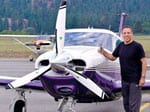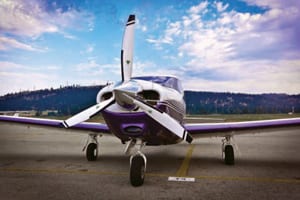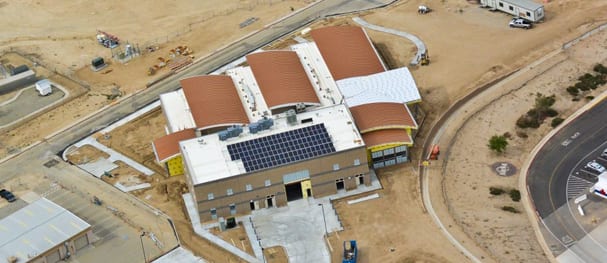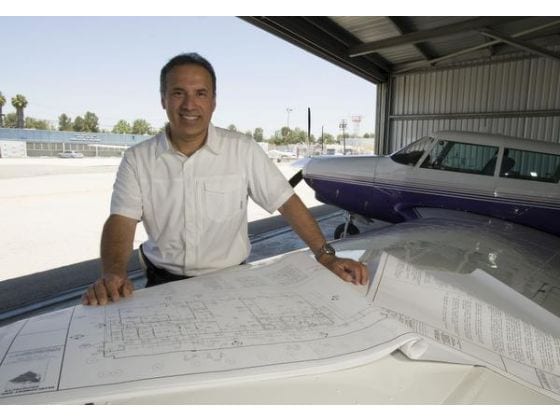COMANCHES ALWAYS LIKE TO BE FIRST
Such was the case with N8871P when it got the first composite propeller in the Comanche fleet. It was time for one of our airplanes to get one of these composite propellers, so I contacted MT Propeller in Germany to see if there would be any interest in fitting my PA24-260B with one of their composite props. I was surprised when I received a direct contact from test pilot and Aerobatic champion Martin Albrecht. He inquired if I would be willing to take my airplane to Deland, Fla. for testing. If so, 71P could be the first to receive the propeller.
After agreeing to terms, we set a date for the install. Not being a stranger to cross-country flights, N8871P launched out of Fullerton, Calif. for Deland on June 14, 2013. It is no secret that our Comanches are great cross-country planes. Above, below, around, and through weather, 71P performed flawlessly, flying coast to coast. America is magnificent from the air, and the Comanche is the perfect airplane for the experience.

Upon arrival at Deland, test pilot Josef Eberl was there to greet us. After getting the introductions out of the way, he allowed us to see the new composite propeller to be installed on my Comanche. Being an architect by profession, my traits are visual in nature. For this reason, when I saw the propeller, all I could think of was that this prop was a magnificent piece of art with its sleek surface, scimitar blade, brilliant color, and polished spinner.
Flight testing of the original propeller began immediately. The testing included all kinds of takeoffs, climbs, slow flight, cruise, stalls, and landings. We documented all the flying characteristics of the existing propeller – three hours’ worth. The next day included documenting the flying characteristics like the day before, but this time with the new propeller. Right off the bat, what I noticed as I was taxiing was a quieter and lighter plane. What stood out most was how “scary” smooth this propeller was. Scary because upon leveling the plane, and bringing back the RPM from 2600 to 2300, the sound decreases substantially to a point that it makes you wonder if the engine is shutting down. I was pleasantly surprised when I saw that the engine was not only operating smoothly, but the cruise improved by about five knots.

With the Hartzell three blade propeller, research indicates that their propeller makes the plane slower at cruise by about three to five knots. Another difference is that the MT Propeller is lighter than the three blade Hartzell and McCauley propellers, and it is also lighter than my original two blade propeller by about 10 pounds.
On landing, the plane slows down much faster due to the dynamics of the three blades versus the two blades. I found myself landing with power to keep the speed up, which I’d never done on the Comanche before. Landing with power makes me feel more in control of the plane. Before, I felt like the plane could float through the fence if I wasn’t careful on a short field. Not much changed on climb, but considering that I was able to climb before at 1,000 – 1,500 feet per minute with the two blade propeller, to see that the MT Propeller could match that, did not leave me disappointed. Undoubtedly, the best part of this upgrade is how beautiful the propeller looks on the Comanche. MT Propeller did not disappoint.
When I fly into an airport, it is not uncommon for people to come up to the airplane to tell me how beautiful it looks. With the new propeller, it is hard for people to identify the plane as a Comanche. They think she’s the local Rock Star.
by J. Bruce Camino, Principal Architect
Development One, Inc.
Original article: Comache Flyer, January 2014 – COMANCHES ALWAYS LIKE TO BE FIRST



